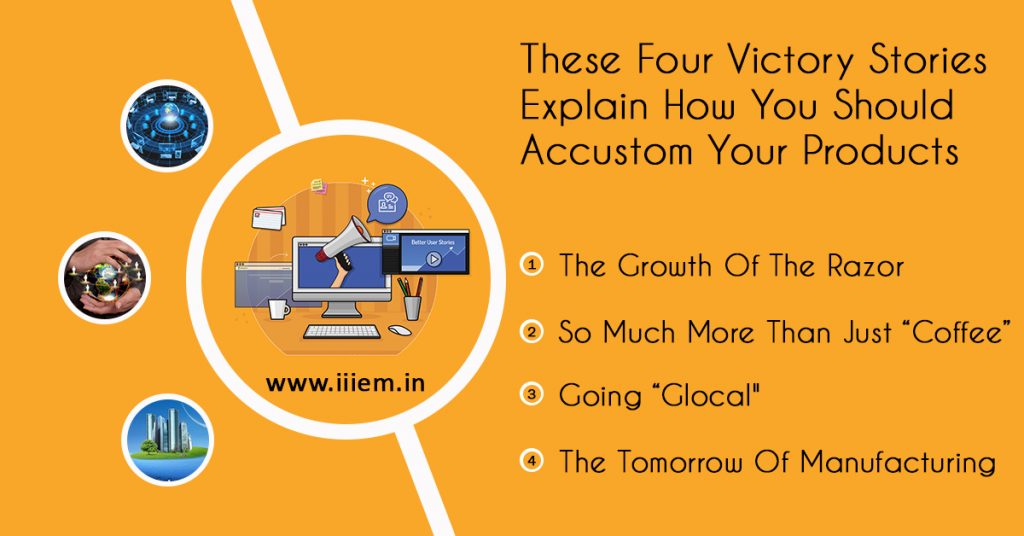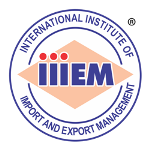Product development and acclimatization is the constant process of delivering goods to the marketplace as products progress through their life cycle, such as substituting ended products with new or modified products. Businesses bring their products to local or international markets through various means and for varying purposes.
Consider:
- New product that presents a totally new market for the business and satisfies a new consumer demand
- Product alteration that promotes the product, interests new consumers and re-engages current consumers in the market
- Product that substitutes a current business product
- Product that significantly widens the market for a current business product
- Current/old business product proposed in a new market
- Current/old business product packaged in a unique way
- Current/old business product traded in a distinct manner

Product development and acclimatization is a constant process. It expects full liaison between the manufacturer and the middleman or end user to secure the product meets market demands and profitability is supported.
In seeking to persuade new markets, businesses have various options open, including:
- Selling graded products as is, i.e., the same product and marketing message
- Altering products for certain safety and functional necessities, e.g., for some nations or regions, product power needs may require converting from 110 to 210 volts
- Creating completely new products for international markets
- Including locally caused variations into products, known as glocalization
- Various types of products can meet various purposes. For example:
- Innovative products are a means for businesses to penetrate an existing market.
- Enhancements to existing product lines strengthen and develop choices for consumers.
- Amendments to an existing product line can increase market share and re‑engage former consumers.
- Repositioning products allow businesses to target new markets.
Product development and acclimatization can be used to decrease production expenses and sometimes decrease prices for consumers when a comparable product can satisfy the same requirements at a cheaper cost.
With these intentions and strategies in mind, here are 4 of the several examples of how accustoming products or producing new ones has paid off spectacularly for businesses worldwide.
- The growth of the razor
The cartridge safety razor was first proposed in the 1960s. These razors were widespread and affordable option to the electric razor launched in the 1930s. Created from moldable plastics, the cartridge razor carried a disposable, replaceable cartridge head. Each cartridge held two blades and would slide on and off a straight plastic grip. This version is the reason for today’s disposable razor.
The cartridge of an improved safety razor has three to five blades, with lubricating strips on either side of the blades. The grip is molded to fit the hand; some vibrate, while others have a ball in the grip and an elastic cartridge to better slide over facial outlines.
These product acclimatizations have transformed the simple safety cartridge razor to a modernized product without losing the value of the original simple model. For more information about import export course to take business opportunities & build international business.
- So much more than just “coffee”
Let’s view the American coffee business Starbucks. The service rendered by baristas composing and customizing Starbucks drinks for the requests of different customers is an essential part of customers buying the business’s products. In 2015, it made USD 19.2 billion in revenue.
Starbucks penetrated the market offering a coffee shop experience. The business trades its signature coffee in their coffee shops all across the world. In 2016, Starbucks had baristas in fifty nations. Regarding continued growth, it anticipates having more than 37,000 shops by 2021.
Starbucks extends to innovate both regarding its products and its brand encounter. Starbucks offers coffee-based beverages, such as lattes, as well as teas and smoothies. It also retails coffee material, such as mugs, coffee seeds, and coffee makers. Customers can buy snacks too.
Starbucks uses these correlated products to heighten its coffee service and provide more to customers with being a “one-stop-shop”.
- Going “glocal”
In business, the word “glocal” describes tasks that take into account both domestic and international concerns. There are numerous examples of names that penetrate developing markets by accustoming their products to domestic tastes, attitudes, and values.
For instance, McDonalds, a name established on providing high-quality beef food, has modified its menu for India because the cow is deemed as a sacred. They serve McAlooTikki burgers (potato patties) and Chicken Maharaja Mac with Indian seasonings.
- The tomorrow of manufacturing
A Dutch design business called MX3D is collaborating with a diversity of partners, including Autodesk and the Amsterdam City Council, to print a 3D metal bridge over one of the city’s canals.
Designer JorisLaarman says the plan will free the world to think about craft in distinct ways.
“I firmly believe in the tomorrow of digital production and local production, in the distinct craft,” says Laarman.
This bridge will prove how 3D printing ultimately enters the world of large-scale, useful objects and sustainable materials while providing modern freedom of form.
